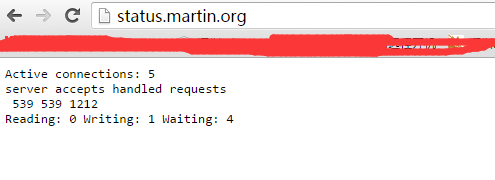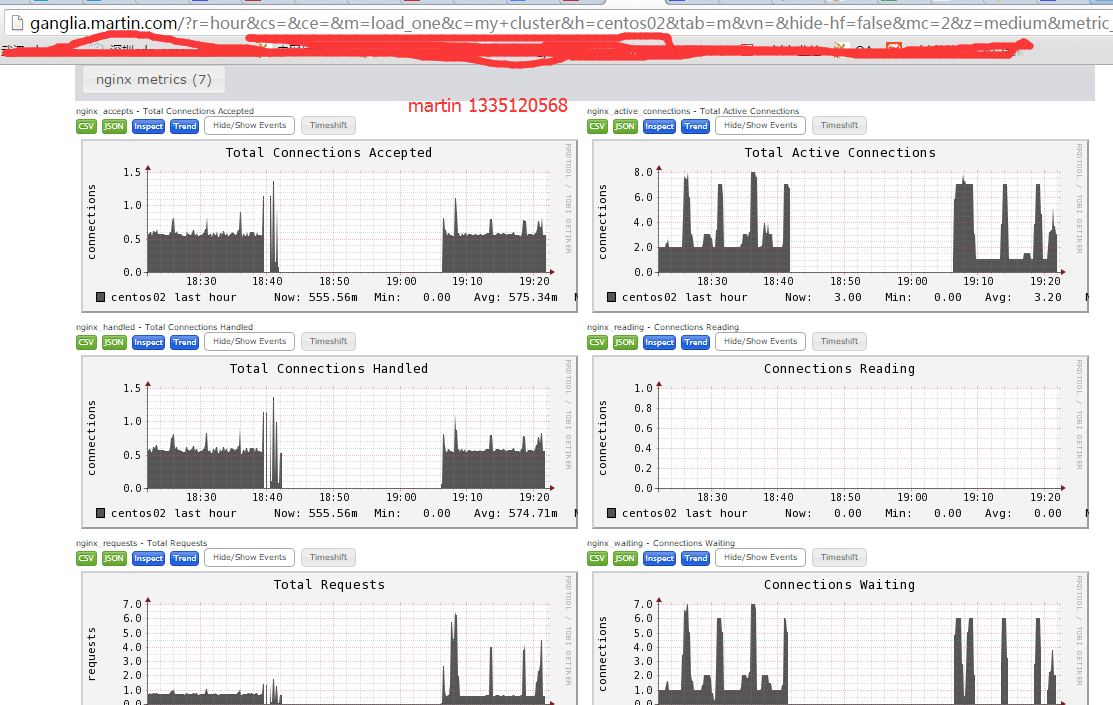1、ganglia简介Ganglia 是一款为 HPC(高性能计算)集群而设计的可扩展的分布式监控系统,它可以监视和显示集群中的节点的各种状态信息,它由运行在各个节点上的 gmond 守护进程来采集 CPU 、内存、硬盘利用率、 I/O 负载、网络流量情况等方面的数据,然后汇总到 gmetad守护进程下,使用 rrdtool 存储数据,最后将历史数据以曲线方式通过 PHP 页面呈现。
Ganglia 的特点如下:良好的扩展性,分层架构设计能够适应大规模服务器集群的需要负载开销低,支持高并发广泛支持各种操作系统( UNIX 等)和 cpu 架构,支持虚拟 2、ganglia组成Ganglia 监控系统有三部分组成,分别是 gmond、 gmetad、 webfrontend,作用如下。
gmond: 即为 ganglia monitoring daemon,是一个守护进程,运行在每一个需要监测的节点上,用于收集本节点的信息并发送到其他节点,同时也接收其他节点发过了的数据,默认的监听端口为 8649。
gmetad: 即为 ganglia meta daemon,是一个守护进程,运行在一个数据汇聚节点上,定期检查每个监测节点的 gmond 进程并从那里获取数据,然后将数据指标存储在本地 RRD 存储引擎中。
webfrontend: 是一个基于 web 的图形化监控界面,需要和 Gmetad 安装在同一个节点上,它从 gmetad 取数据,并且读取 RRD 数据库,通过 rrdtool 生成图表,用于前台展示,界面美观、丰富,功能强大。
下图是其结构
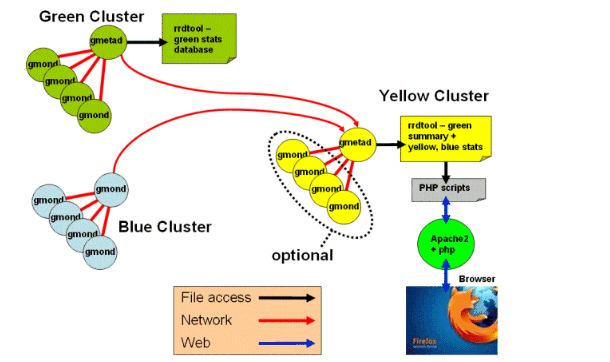
环境规划(centos6.7)服务器端 172.16.80.117客户端 172.16.80.117 172.16.80.1163、ganglia的安装[root@centos02 tools]# wget wget [root@centos02 tools]# rpm -ivh epel-release-6-8.noarch.rpm [root@centos02 tools]# yum install ganglia-gmetad.x86_64 ganglia-gmond.x86_64 ganglia-gmond-python.x86_64 -y 修改服务端配置文件 [root@centos02 tools]# vim /etc/ganglia/gmetad.conf data_source “my cluster” 172.16.80.117 172.16.80.116 gridname “MyGrid” ganglia web的安装(基于LNMP环境) [root@centos02 tools]# tar xf ganglia-web-3.7.2.tar.gz [root@centos02 tools]# mv ganglia-web-3.7.2 /application/nginx/html/ganglia 修改ganglia web的php配置文件 [root@centos02 tools]# vim /application/nginx/html/ganglia/conf_default.php $conf[gweb_confdir] = “/application/nginx/html/ganglia”; nginx配置 [root@centos02 ganglia]# cat /application/nginx/conf/nginx.conf worker_processes 2; events { worker_connections 1024; } http { log_format main $remote_addr – $remote_user [$time_local] “$request” $status $body_bytes_sent “$http_referer” “$http_user_agent” “$http_x_forwarded_for”; include mime.types; default_type application/octet-stream; sendfile on; keepalive_timeout 65; server { listen 80; server_name www.martin.com martin.com; location / { root html/zabbix; index index.php index.html index.htm; } location ~ .*\.(php|php5)?$ { root html/zabbix; fastcgi_pass 127.0.0.1:9000; fastcgi_index index.php; include fastcgi.conf; } access_log logs/access_zabbix.log main; } server { listen 80; server_name ganglia.martin.com; location / { root html/ganglia; index index.php index.html index.htm; } location ~ .*\.(php|php5)?$ { root html/ganglia; fastcgi_pass 127.0.0.1:9000; fastcgi_index index.php; include fastcgi.conf; } access_log logs/access_bbs.log main; } ###status server{ listen 80; server_name status.martin.org; location / { stub_status on; access_log off; } } } 访问测试,报错如下 Fatal error:Errors were detected in your configuration. DWOO compiled templates directory /application/nginx/html/ganglia/dwoo/compiled is not writeable. Please adjust $conf[dwoo_compiled_dir]. DWOO cache directory /application/nginx/html/ganglia/dwoo/cache is not writeable. Please adjust $conf[dwoo_cache_dir]. in /application/nginx-1.6.3/html/ganglia/eval_conf.php on line 126 解决办法: [root@centos02 tools]# mkdir /application/nginx/html/ganglia/dwoo/compiled [root@centos02 tools]# mkdir /application/nginx/html/ganglia/dwoo/cache [root@centos02 tools]# chmod 777 /application/nginx/html/ganglia/dwoo/compiled [root@centos02 tools]# chmod 777 /application/nginx/html/ganglia/dwoo/cache [root@centos02 html]# chmod -R 777 /var/lib/ganglia/rrds 修改客户端配置文件(所有的客户端都需要做) [root@centos02 tools]# vim /etc/ganglia/gmond.conf cluster { name = “my cluster” #这个名字要和服务器端定义的data_source后面的名字一样 owner = “unspecified” latlong = “unspecified” url = “unspecified” } udp_send_channel { #bind_hostname = yes # Highly recommended, soon to be default. # This option tells gmond to use a source address # that resolves to the machines hostname. Without # this, the metrics may appear to come from any # interface and the DNS names associated with # those IPs will be used to create the RRDs. # mcast_join = 239.2.11.71 host = 172.16.80.117 #这里我们采用单播方式,默认是组播 port = 8649 # ttl = 1 } udp_recv_channel { # mcast_join = 239.2.11.71 port = 8649 # bind = 239.2.11.71 retry_bind = true # Size of the UDP buffer. If you are handling lots of metrics you really # should bump it up to e.g. 10MB or even higher. # buffer = 10485760 }
4、再次访问测试
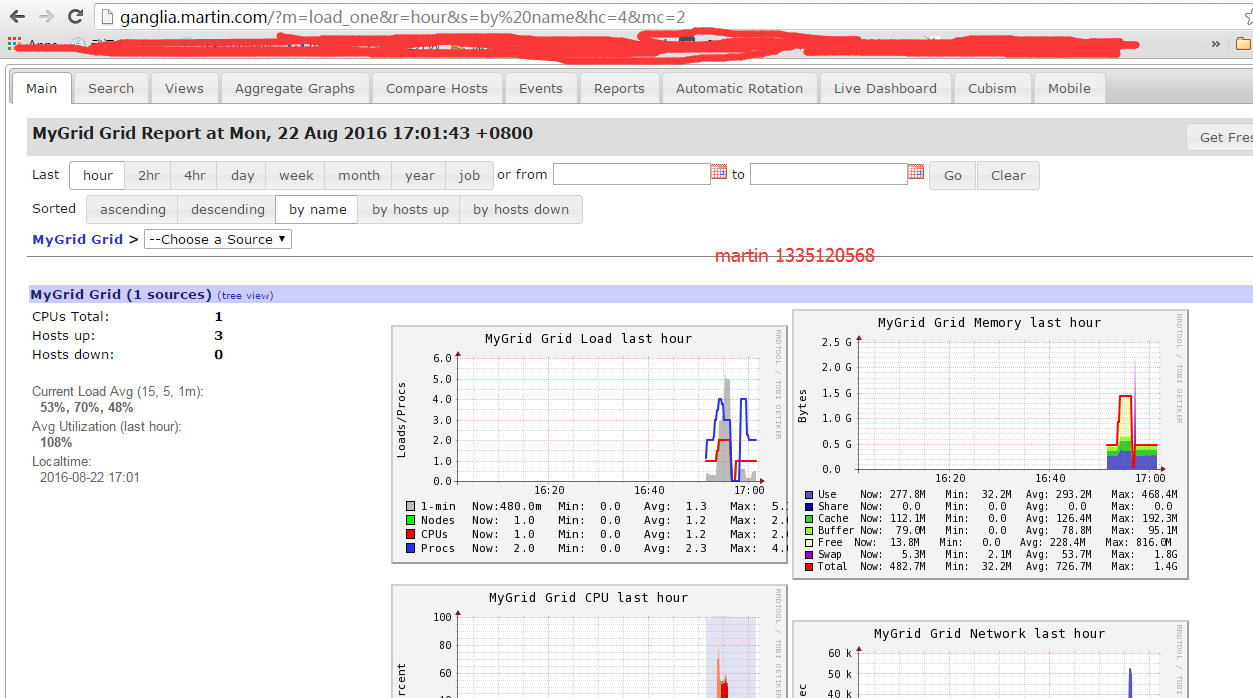
这里是整个集群的一个总的汇总图,而不是单台服务器的图,下面我们打开单台服务器的图看看
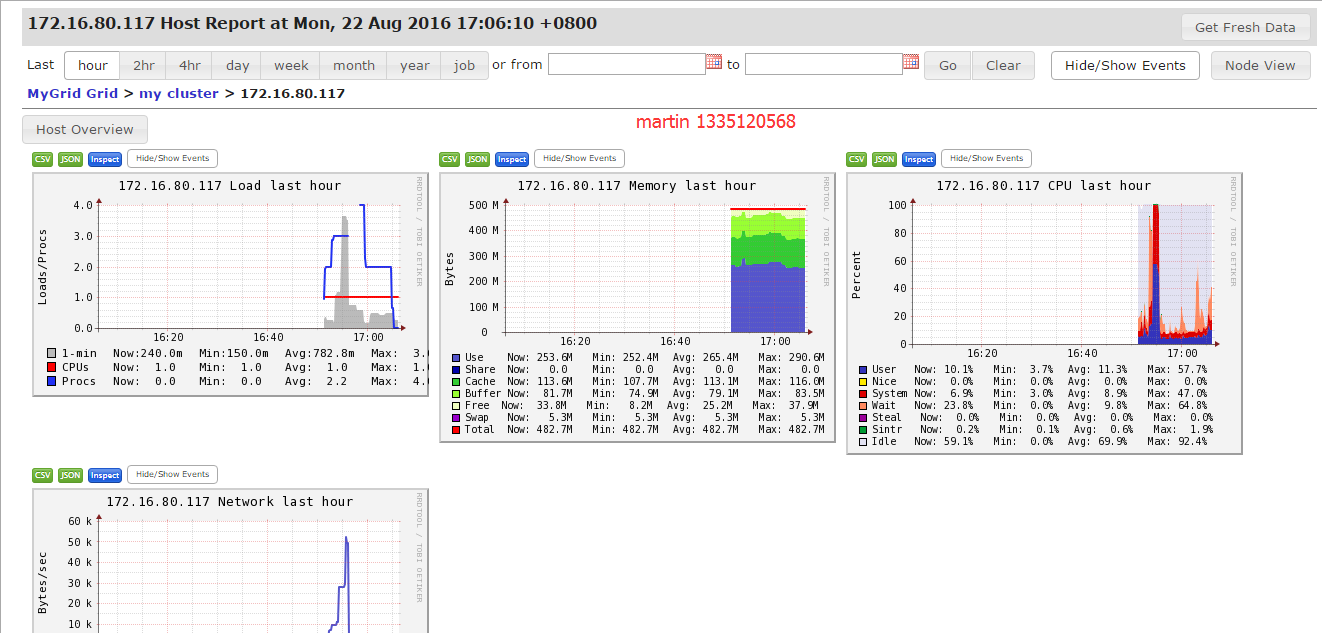
再来看看对同一指标,每台服务器一起显示的图
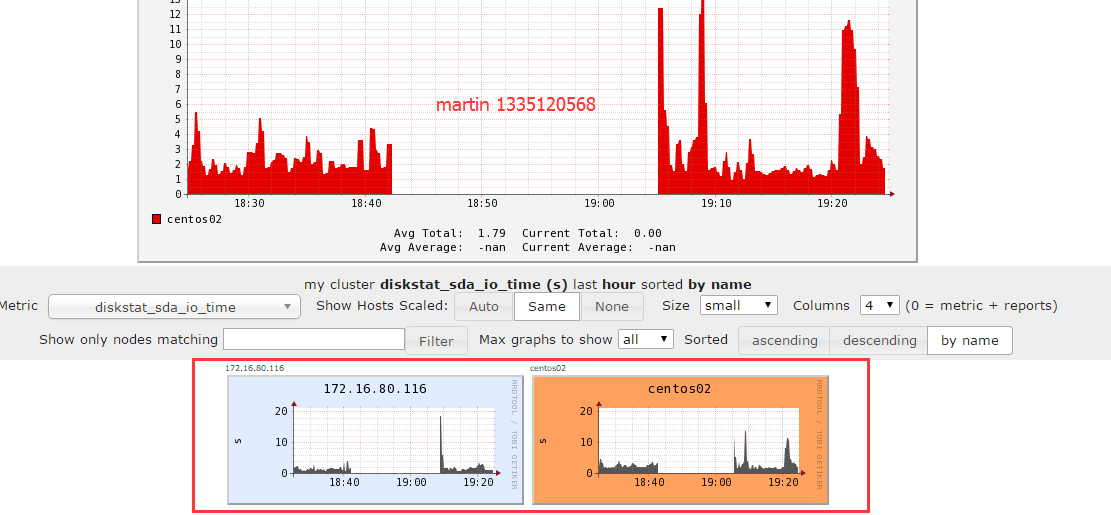
5、扩展 Ganglia 监控功能的方法默认安装完成的 Ganglia 仅向我们提供基础的系统监控信息,通过 Ganglia 插件可以实现两种扩展 Ganglia 监控功能的方法1) 添加带内( in-band)插件,主要是通过 gmetric 命令来实现。
这是通常使用的一种方法,主要是通过 crontab 方法并调用 Ganglia 的 gmetric 命令来向gmond 输入数据,进而实现统一监控这种方法简单,对于少量的监控可以采用,但是对于大规模自定义监控时,监控数据难以统一管理。
2) 添加一些其他来源的带外( out-of-band)插件,主要是通过 C 或者 Python 接口来实现在 Ganglia3.1.x 版本以后,增加了 C 或 Python 接口,通过这个接口可以自定义数据收集模块,并且可以将这些模块直接插入到 gmond 中以监控用户自定义的应用。
这里我们举例通过带外扩展的方式 来监控nginx的运行状态配置 ganglia 客户端,收集 nginx_status 数据 [root@centos02 nginx_status]# pwd /tools/gmond_python_modules-master/nginx_status [root@centos02 nginx_status]# cp conf.d/nginx_status.pyconf /etc/ganglia/conf.d/ [root@centos02 nginx_status]# cp python_modules/nginx_status.py /usr/lib64/ganglia/python_modules/ [root@centos02 nginx_status]# cp graph.d/nginx_* /application/nginx/html/ganglia/graph.d/ [root@centos02 mysql]# cat /etc/ganglia/conf.d/nginx_status.pyconf # modules { module { name = nginx_status language = python param status_url { value = http://status.martin.org/ } param nginx_bin { value = /application/nginx/sbin/nginx } param refresh_rate { value = 15 } } } collection_group { collect_once = yes time_threshold = 20 metric { name = nginx_server_version title = “Nginx Version” } } collection_group { collect_every = 10 time_threshold = 20 metric { name = “nginx_active_connections” title = “Total Active Connections” value_threshold = 1.0 } metric { name = “nginx_accepts” title = “Total Connections Accepted” value_threshold = 1.0 } metric { name = “nginx_handled” title = “Total Connections Handled” value_threshold = 1.0 } metric { name = “nginx_requests” title = “Total Requests” value_threshold = 1.0 } metric { name = “nginx_reading” title = “Connections Reading” value_threshold = 1.0 } metric { name = “nginx_writing” title = “Connections Writing” value_threshold = 1.0 } metric { name = “nginx_waiting” title = “Connections Waiting” value_threshold = 1.0 } }
完成上面的所有步骤后,重启 Ganglia 客户端 gmond 服务,在客户端通过“ gmond–m”命令可以查看支持的模板,最后就可以在 Ganglia web 界面查看 Nginx 的运行状态
